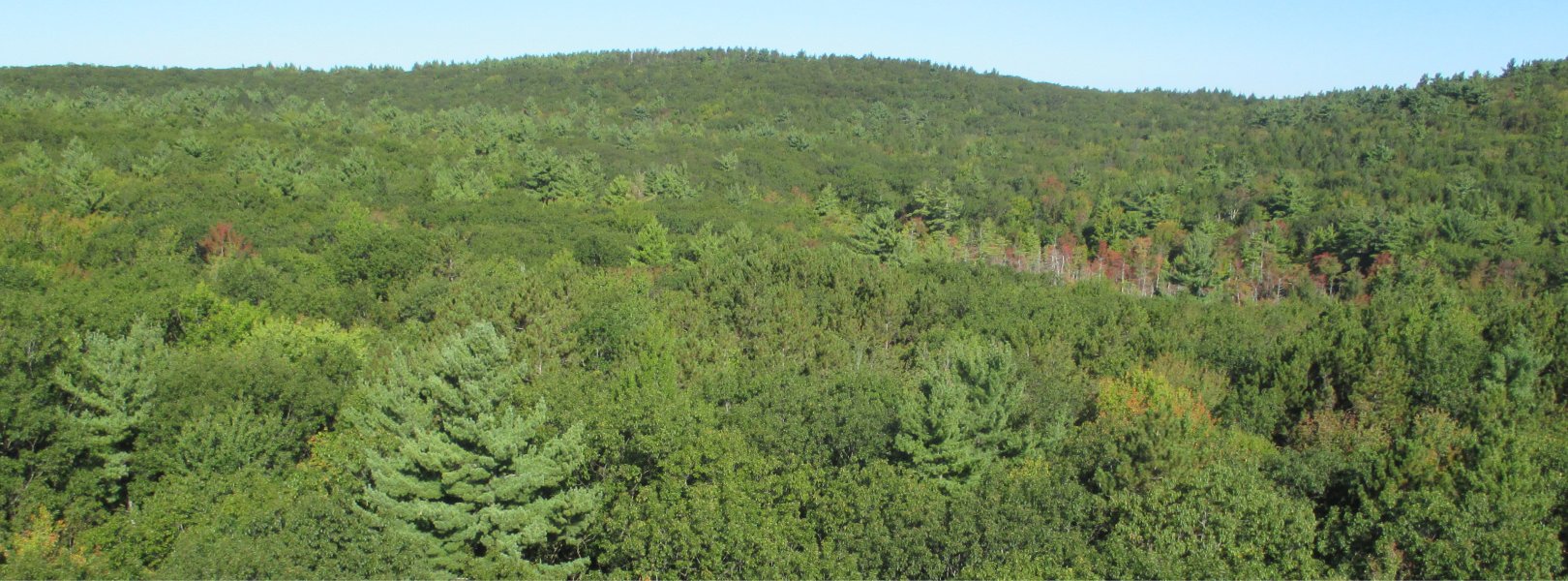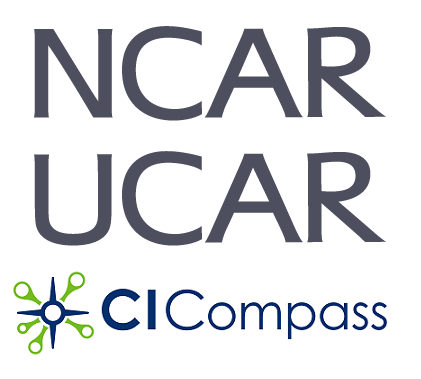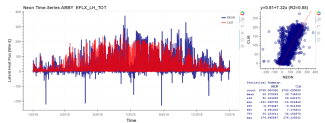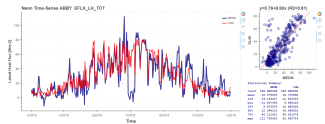NCAR-NEON Community Collaborations


NCAR-NEON-Community Collaborations: Predicting life in the Earth system – linking the geosciences and ecology
- A series of additional virtual and in-person workshops.
- An NSF Data CI Pilot: NCAR and NEON Cyberinfrastructure Collaborations to Enable Convergence Research Linking the Atmospheric and Biological Sciences (more information and resources below). This work is in collaboration with the NSF CI Compass.
Data CI Pilot: NCAR and NEON Cyberinfrastructure Collaborations to Enable Convergence Research Linking the Atmospheric and Biological Sciences
This project is working to link NCAR’s Community Earth System Model (CESM) and the Community Land Model (CLM) with NEON’s measurement network to enable new synergies at the intersection of ecology and Earth science. Broadly, this project aims to create cyberinfrastructure relevant to answering questions such as:
- What biases in NCAR models can current NEON observations address?
- How can NCAR models inform NEON data streams?
- What new hypotheses of atmospheric science and macroscale ecology can be tested with NEON observations and NCAR models to increase our understanding of the biosphere-atmosphere system and its response to global environmental change?
- Can Earth system prediction be extended to ecological forecasts?
Two key cyberinfrastructure developments will enable these scientific advances:
- The development of a containerized CESM/CLM development environment (forthcoming) including tools to gather NEON data sets, process them for model input, and for data analysis and visualization.
- If you would like to be an early adopter and help us to test the modeling environment, please fill out this Google form.
- Information on CLM tutorials can be found here.
- Prototype pathways and infrastructure for the dissemination of CLM model outputs to the ecological community via NEON systems to facilitate data discovery and exploration.
- CLM outputs for NEON sites as well as gap-filled NEON observations are available as prototype data sets on the NEON Data Portal.
- Example outputs and model/observational comparisons can be explored below!
CLM model outputs / observational comparisons
Time-series of Hourly average Latent Heat Flux at ABBY
This interactive time-series plot shows the hourly average Latent Heat Flux [W/m2] at the Abby Road site from the NEON program and CLM simulation. The top right scatter plot shows the correlation between the observed and simulated Latent Heat Flux [W/m2] at the same NEON site (ABBY). The bottom right features the statistical summary of observed and simulated Latent Heat Flux.
In this plot, you can zoom in or select a time period to better investigate how the hourly average latent heat flux varies.

Time-series of Daily average Latent Heat Flux at ABBY
This interactive figure compares the daily average Latent Heat Flux [W/m2] at NEON's Abby Road site with CLM simulation. The left plot shows the time-series of the daily average Latent Heat Flux from NEON and model. Select a period of interest to zoom and investigate further.
The top right plot shows the correlation between observed and simulated Latent Heat Flux at ABBY. Finally, the statistical summary of observed and simulated Latent Heat Flux are featured in the bottom right panel.

Diurnal Cycle of Latent Heat Flux at ABBY
This figure shows the daily cycle (also known as diurnal cycle) of observed (NEON) and simulated (CLM) Latent Heat Flux during summer 2018 at NEON's Abby Road site (ABBY).
The top left corner shows how the Latent Heat Flux average of each hour from all summer 2018 days change during the day for both NEON and CLM.
